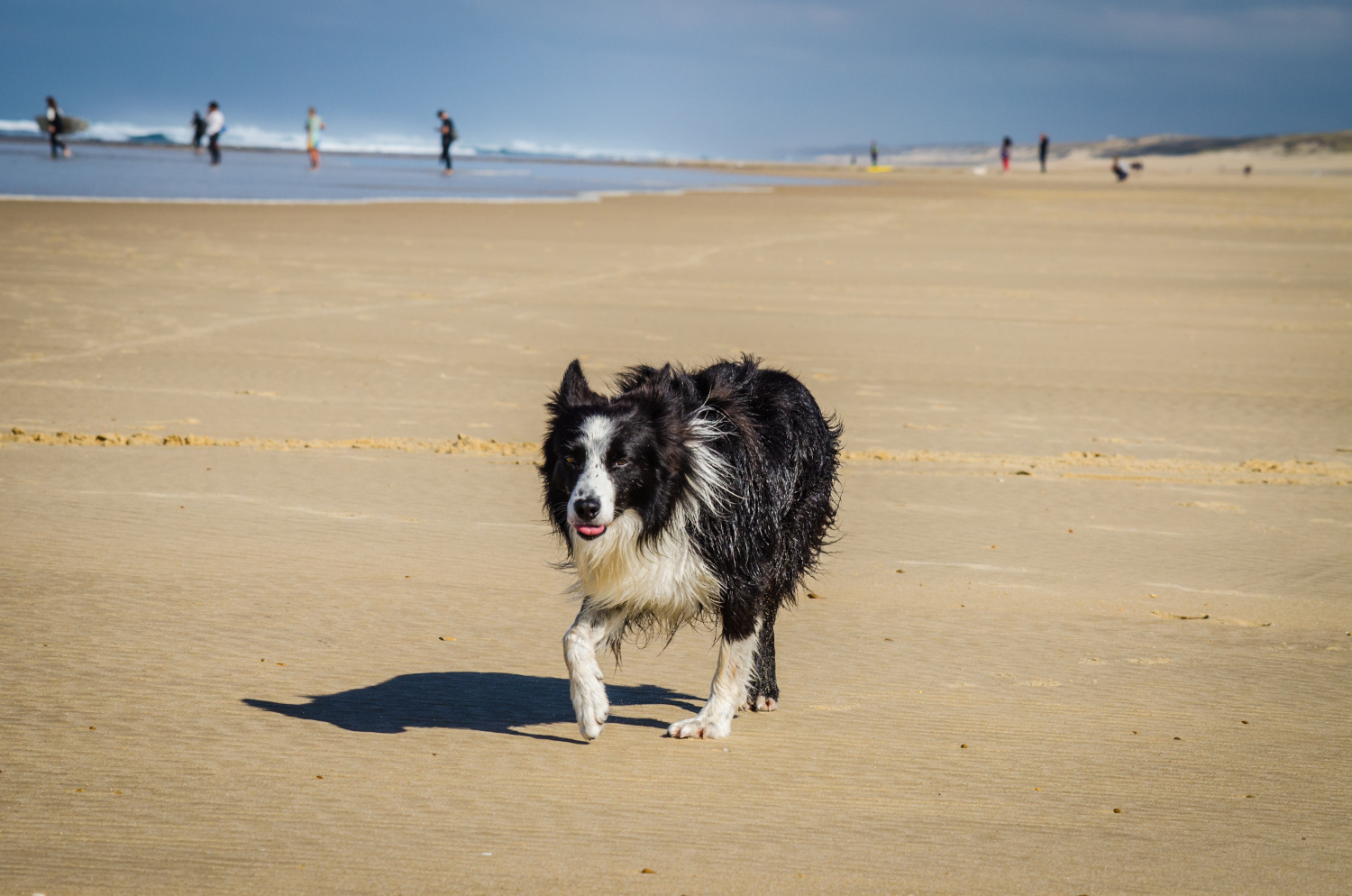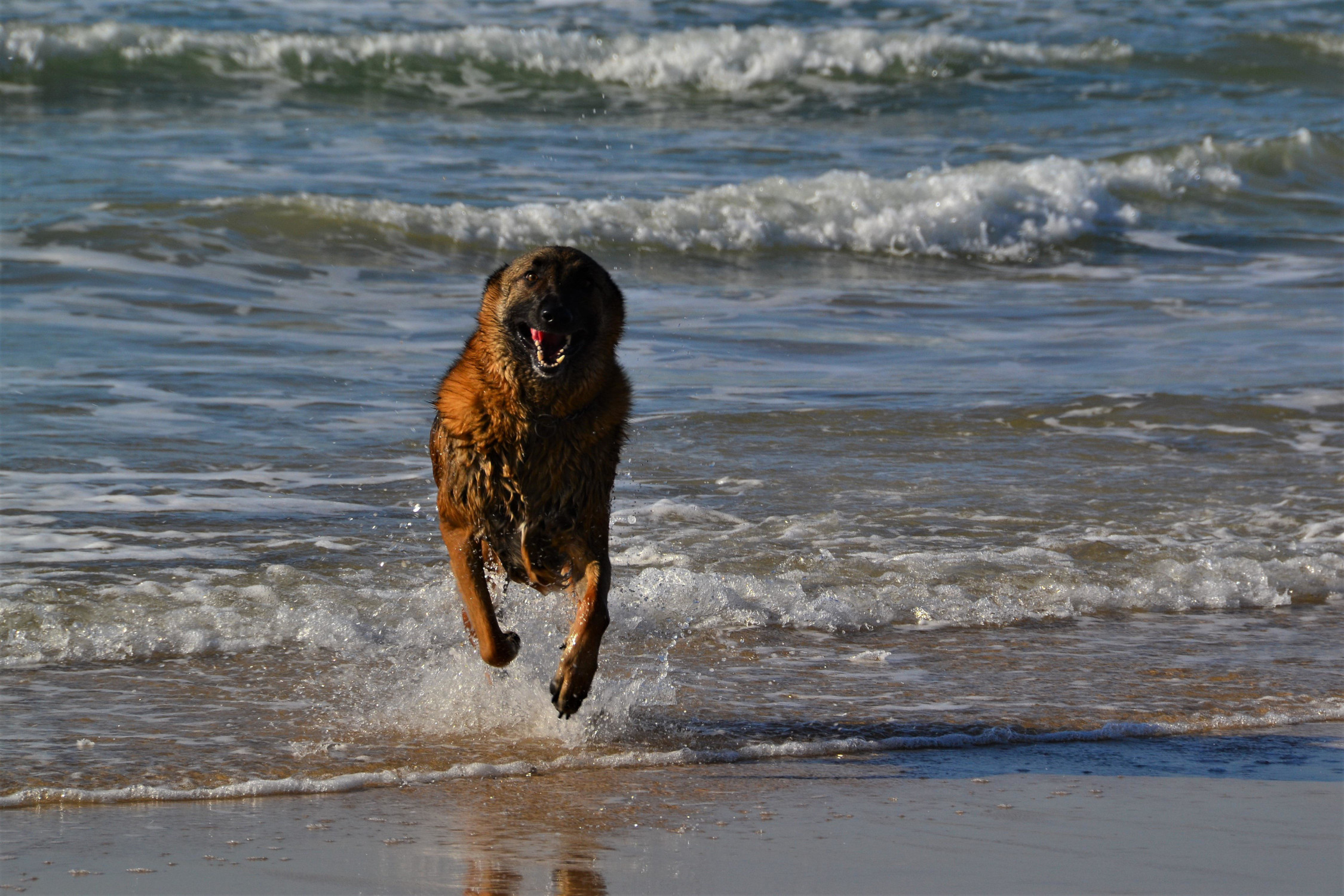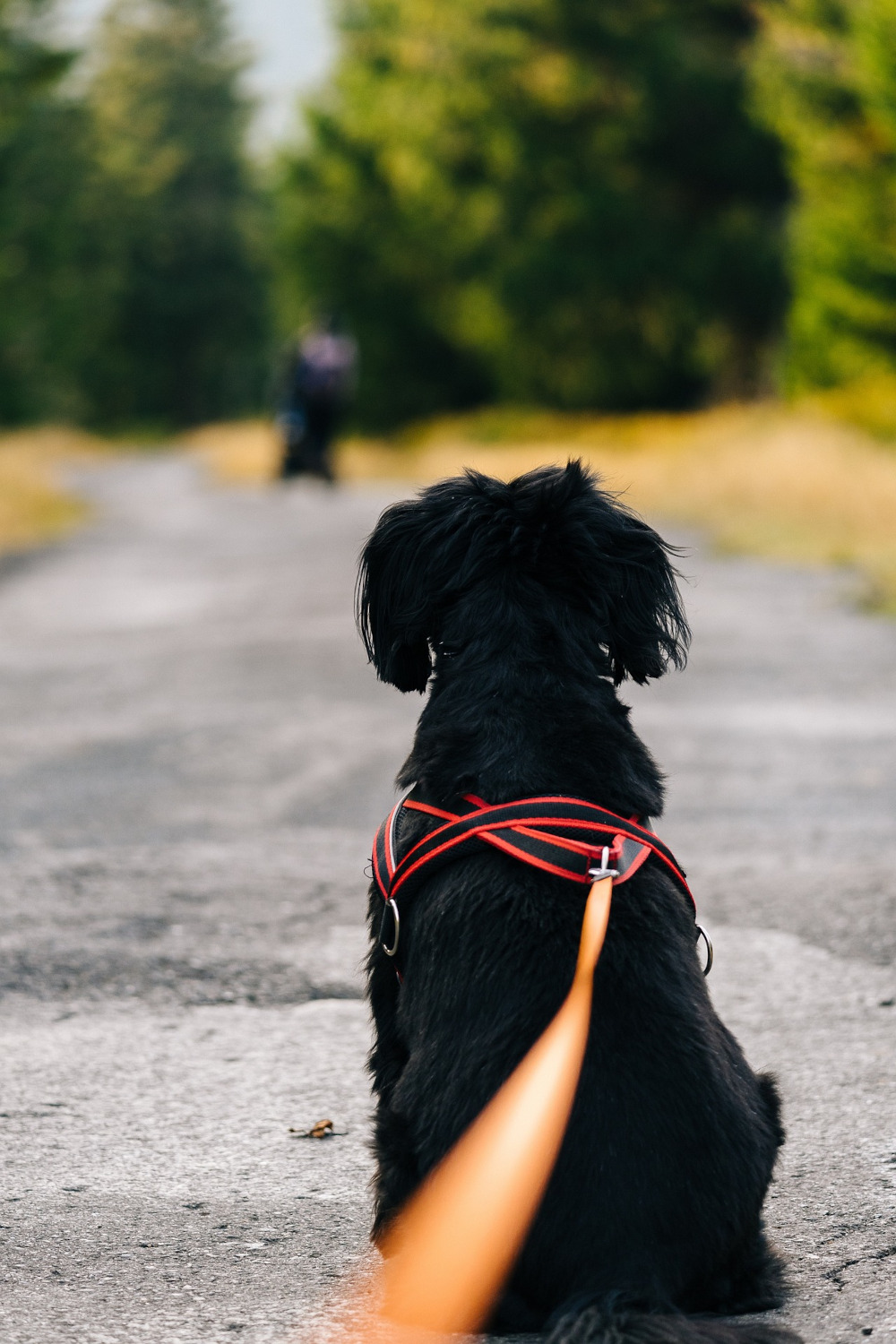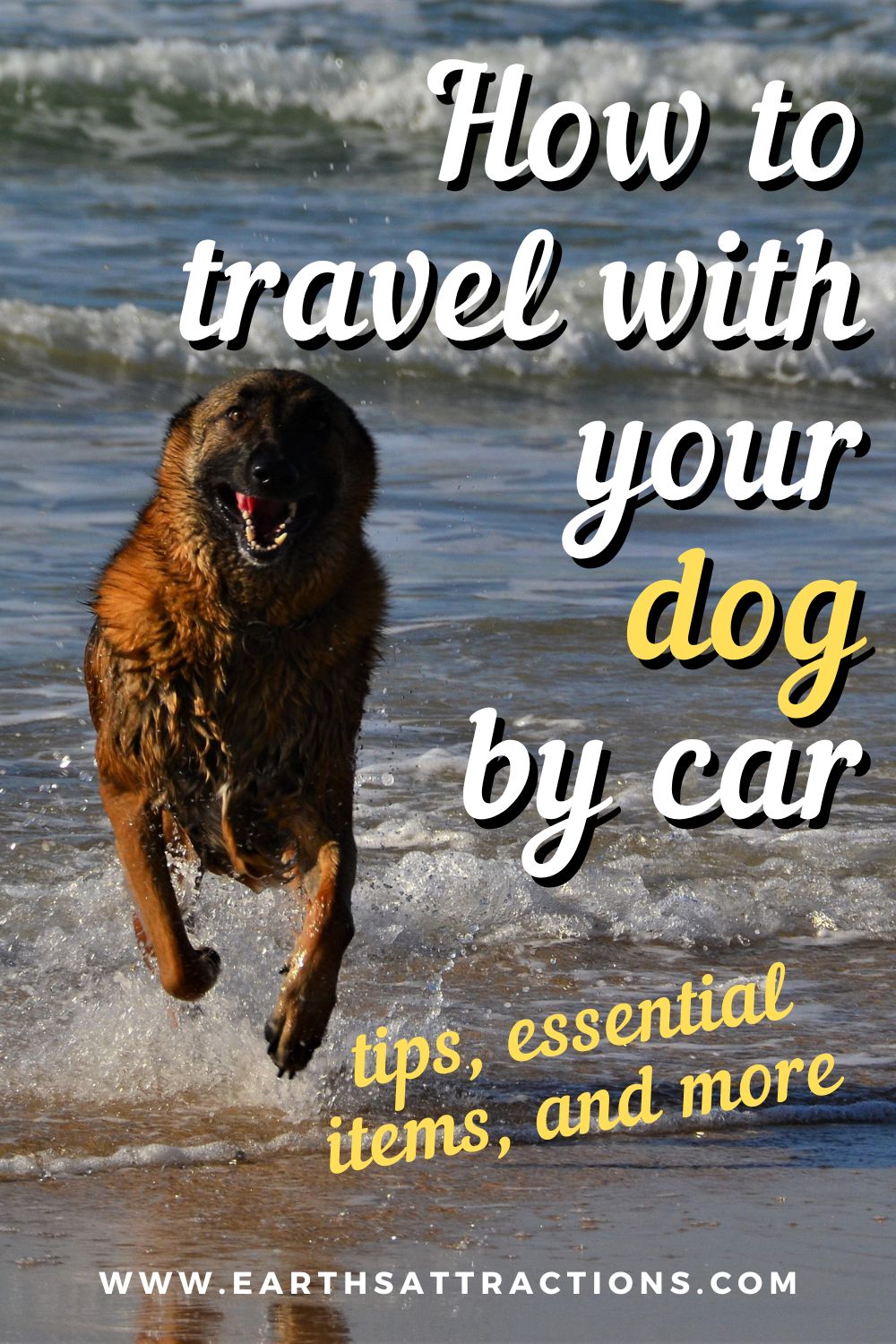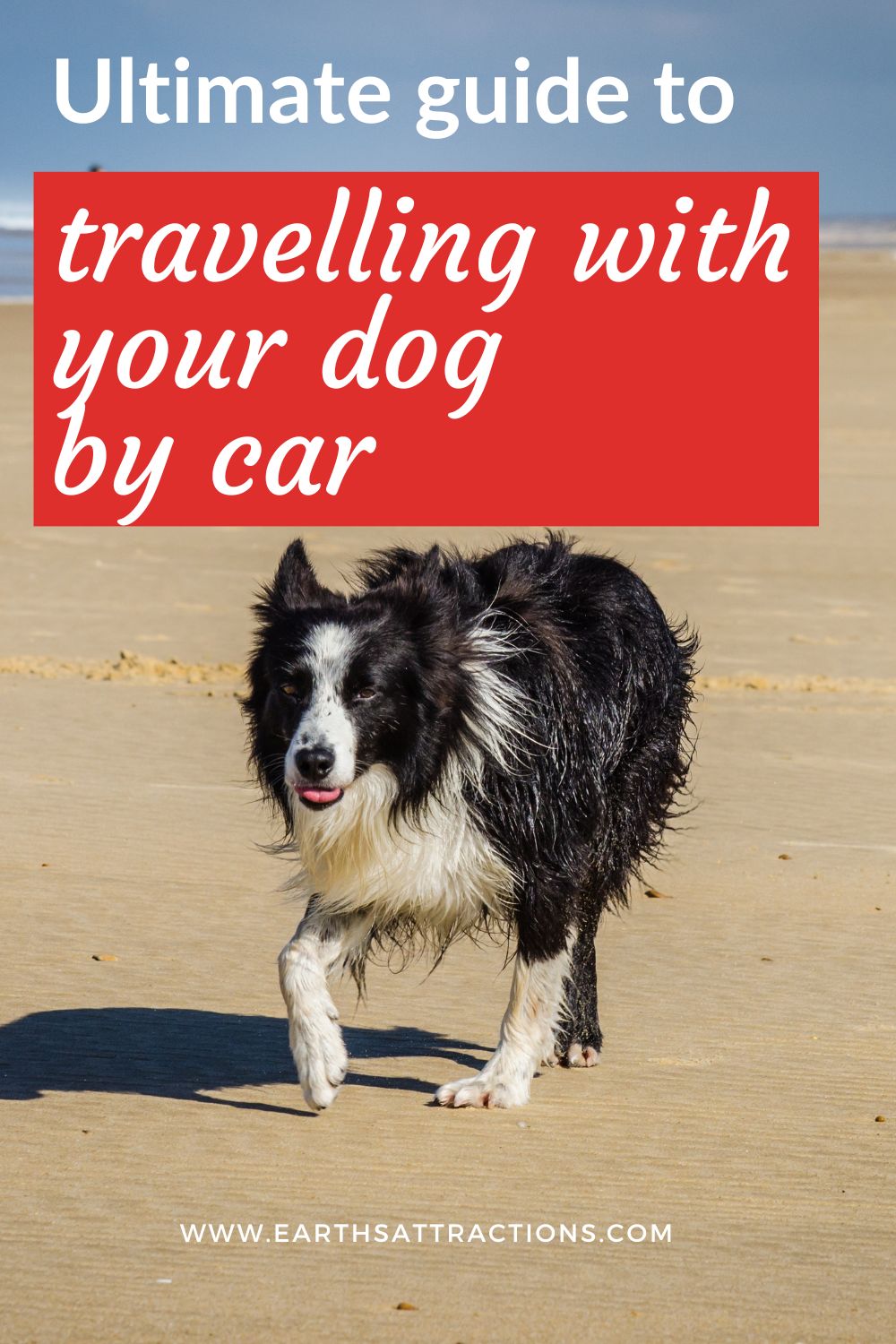Traveling with a dog by car is an amazing experience! And I am saying that after going on short trips as well as longer vacations with our dog!
I’ve been a proud dog owner for 14 years and we cherish all the memories we have from our travels (first as a couple with a dog, then as a couple, with a child and a dog.)
Throughout our journeys together, I’ve learned valuable tips and tricks for traveling with a dog by car that can help ensure a safe, comfortable, and enjoyable adventure for both you and your four-legged friend.
So, if you’re planning a road trip with your dog, buckle up and let me share my insights on traveling with a dog by car.
Traveling with a dog in a car: tips for a paw-some experience
From dog travel essentials for any trip to useful tips and tricks, this article is the ultimate guide to road-tripping with your dog.
Included in this travelling with a dog by car guide:
- Preparing for the trip
- Make sure the dog is used to and likes to travel by car
- Schedule a veterinary check-up before the trip
- Health card (up to date)
- Research dog-friendly rest areas, parks, and attractions
- Dog car travel essentials – what to pack when traveling with your dog by car
- Dog safety harness
- Dog crate
- Food and water bowls (and food, and water)
- Food and treats
- Pills
- Bedding and familiar items
- Leash and poop bags
- Blankets and towels
- Safety measures
- Use a proper restraint system
- Secure loose items in the car
- Never leave your dog unattended in a parked car
- Be cautious when opening car windows and doors
- Planning Pit Stops
- Schedule regular bathroom breaks
- Carry necessary supplies
- Health and Comfort
- Maintain proper ventilation and temperature
- Avoid feeding a large meal before the trip
- Offer regular water breaksEntertainment and Distractions
- Entertainment and Distractions
- Toys
- Calming music or white noise
- Window shades
- Handling Car Sickness and Anxiety
- Gradual acclimation
- Consult your veterinarian
- Adhering to Travel Regulations
- Research pet policies and regulations
- Carry necessary documentation
- Find pet-friendly accommodations and dining options
- Conclusion
How to travel with your dog by car
Preparing for the Trip – Things to know before travelling with your dog by car
Wondering how to travel with a dog by car? Read this guide to dog car travel and you will be prepared for your trips!
Make sure the dog is used to and likes to travel by car
Before hitting the open road, it’s important to ensure that your dog is comfortable with car rides. Start by taking your dog on short drives to help them acclimate to the sensation and associate it with positive experiences.
Gradually increase the duration of the trips to build their confidence.
If your dog is car sick, then reduce traveling with it by car as much as possible.
We were fortunate enough to have a dog that had no issues with short and long trips by car – even when the roads had many hairpin turns.
But we have a friend who has a dog who is so car sick, that he cannot take it anywhere by car. The health of the animal trumps the fun of having it on the road and this friend always finds someone to dog-sit while he is on vacation.
Schedule a veterinary check-up before the trip
We would always take our dog to the doctor’s to see if she is alright. And that was even for short trips.
It’s crucial to schedule a veterinary check-up before the trip. Your vet will ensure your dog is in good health, update vaccinations if necessary, and provide you with any specific advice or medication for the journey.
Remember to update your dog’s identification tags and microchip information with your current contact details. In the event that your dog gets lost during the trip, this simple step can greatly increase the chances of a safe reunion.
Health card
When going to the vet, make sure you bring the dog’s health card along. If you are traveling by car with your dog in a foreign country, check online the requirements (documents, vaccines, etc.)
Ask your doctor to include stamps and other details about vaccines and everything health-related to your dog.
Bring the health card of your dog with you on the trip.
Research dog-friendly rest areas, parks, and attractions
Before hitting the road, identify pet-friendly stops along your route. Look for rest areas with designated dog walking areas or parks where your dog can stretch their legs and burn off some energy.
Dog car travel essentials
Packing essentials for your dog’s comfort and safety should always be a priority. You can create a list of essential items to consider when packing for a trip with a dog.
So this is a dog car travel essentials checklist:
Dog safety harness
A dog harness is an important safety item for traveling in the car. It ensures that your dog is securely fastened in place and prevents them from getting injured in the event of an accident. There are many types of dog harnesses available, so be sure to choose one that is suitable for your dog’s size and weight.
As a note, I always recommend a harness. It can be fixed with the seatbelt and it ensured that the dog has as much freedom to move as possible – and doesn’t feel caged.
Dog crate (if necessary)
A dog crate can be a useful item if you plan on traveling long distances with your four-legged friend.
It provides a safe and comfortable space for your dog to rest and relax during the journey. Be sure to choose a crate that is the right size for your dog and is comfortable for them to lie down in.
Sometimes the dog crate is a requirement – so make sure to check ahead the pet-traveling requirements from the country you are visiting.
Food and water bowls
You can pack collapsible bowls for convenience. You should always have water available for your dog during the trip, so be sure to make frequent water breaks.
We used some simple – small – bowls. The dog knew them – they had a familiar scent from home – so it was no problem for her to use them.
Food and treats
Carry enough food for the duration of the trip, and consider using portable containers to keep it fresh. Treats can be handy as well if your dog is used to them.
Here I have to add that our dog did not eat a lot while traveling by car. We NEVER FORCED food on Maxie. We always trusted her to know exactly how much food she needs on the road.
She always drank a lot, so we took many breaks – allowing her to stretch her legs, pee, and drink the water she needs.
Pills
We travelled with our dog for as long as it was OK for her (according to her vet.) For a period of this time, she had to take a pill – mid-day. We always made sure we had that pill with us.
So, if your dog is under any treatment, as long as the vet OK’s your furry friend to take trips, make sure you have the necessary pills with you.
If your dog has strict hours for the administration of that med, set alarms on your phone to make sure you administer the meds at the set hour.
Bedding and familiar items
Please bring along your dog’s favorite bedding, toys, and a familiar blanket to provide them with a sense of comfort and security, especially in unfamiliar environments.
On one-day trips, we didn’t pack toys – but then again our dog didn’t really use toys in general. But if your dog likes them, make sure you pack some.
Include some toys to use with your dog to help them relax and exercise – frisbees or balls…
Leash and poop bags
These should go without saying 🙂 Even though you’ll be spending most of the trip in the car, you’ll still need to walk your dog during breaks. Remember to keep your dog on a leash and clean up after them.
Blankets and towels
Bring along a few blankets and towels to keep your dog comfortable and clean during the journey.
I actually have a funny story about this. We went to the beach on a one-day trip (it’s a 3 hours drive from our home.) It was spring and it was still cold. We packed food, bowls, and everything we needed for her. We took snacks, and water for us. But… we didn’t pack anything to use as a blanket/sheet on the sand.
Well, we arrived at the beach, walked a lot, picked up shells, etc. And when I wanted to sit on the sand, I realised I have nothing to sit on.
So I put my jacket on the sand.
And before I could sit on it, the dog was already there!
Maxie was actually thrilled that we finally set something for her to sit on the beach.
It was a fun situation!
Tips for traveling with dogs by car
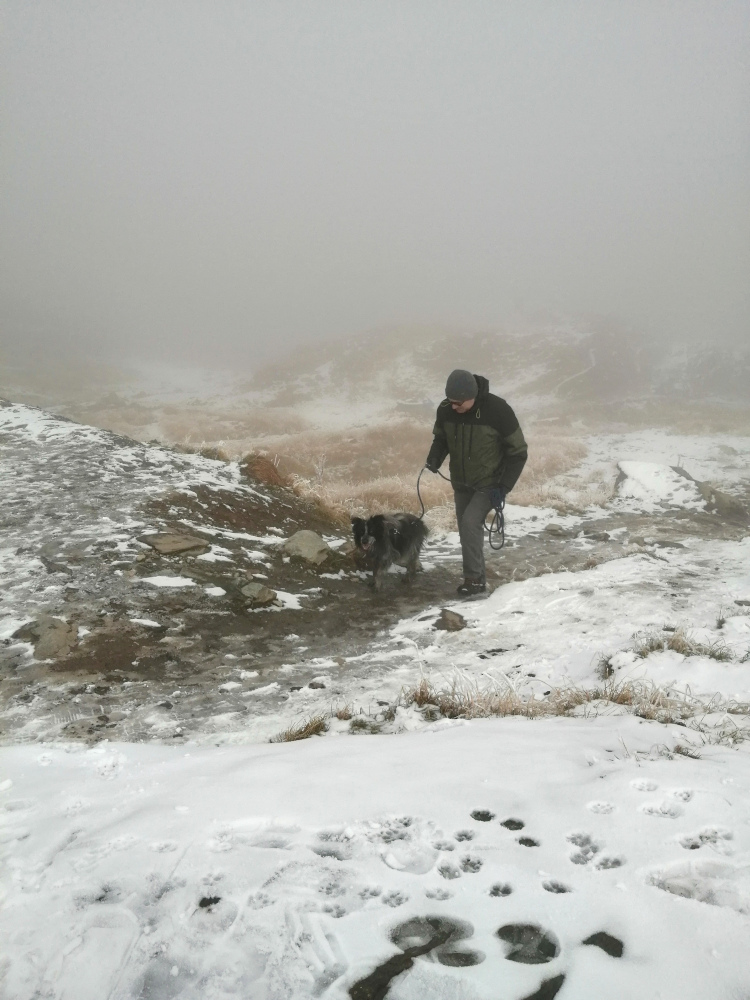
Once you have all the necessary dog car travel essentials, it’s time to prepare for the journey itself. Here are some tips to make the trip a paw-some experience for both you and your furry friend:
How to travel with a dog in a car: Safety Measures
Safety should be your top priority when traveling with a dog by car. Here are some essential safety measures to consider:
Use a proper restraint system
Never allow your dog to roam freely in the car while it’s in motion. A loose dog can become a dangerous distraction or could get injured in the event of sudden stops or accidents.
Invest in a high-quality harness, crate, or seat belt specifically designed for travel.
We had a harness – it was perfect for the dog. And yes, we had to brake suddenly a few times but she was never hurt nor a problem for us in the car. We never – ever! – traveled by car with the dog without said harness – which used the seatbelt for safety. All trips – even a short one on a visit, to a park, or to the doctor – were taken with Maxie wearing that harness.
Secure loose items in the car
In the event of sudden stops or sharp turns, loose items in the car can become projectiles that may cause harm to both you and your dog.
So please make sure you secure any loose items, such as bags or equipment, to ensure everyone’s safety.
Never leave your dog unattended in a parked car
Even with the windows cracked open, temperatures inside a parked car can quickly rise, leading to heatstroke or other health risks (especially during the summer).
If you need to leave the car, take your dog with you or find a pet-friendly establishment where they can safely stay with you.
Be cautious when opening car windows and doors
Dogs are naturally curious – more so than others -, and an open window or door can be an invitation for them to explore.
Always ensure your dog is securely restrained or leashed before opening any car windows or doors to prevent them from jumping out or running into traffic.
Planning Pit Stops
Frequent breaks are essential to keep both you and your dog comfortable and relaxed during the journey. Here’s how you can plan pit stops effectively:
Schedule regular bathroom breaks
Dogs have their own “bathroom needs”, so plan to stop every few hours to give them a chance to relieve themselves. Use these opportunities to stretch your legs too!
You already know the hours when you walk your dog – use those and add a few more.
Also pay attention to the dog itself. You know your furry friend, so you can easily see when it is starting to be a bit agitated – that means you should probably take a break.
Carry necessary supplies
Pack poop bags, water bottles, and a portable water dish for your dog’s hydration needs. It’s important to clean up after your dog and always leave the environment as you found it.
Health and Comfort
Ensuring your dog’s health and comfort throughout the journey is vital. Here are some more dog travel tips to keep in mind:
Maintain proper ventilation and temperature
Keep the car well-ventilated to ensure fresh air circulation.
Again, please avoid leaving your dog in a hot or stuffy car, as dogs are more susceptible to heatstroke. If necessary, use air conditioning or keep the windows partially open to regulate the temperature.
Note: make sure you know in advance that the dog tolerates air conditioning and the suitable temperature for it. I admit we never had such issues with our Maxie, but I have friends who need to keep the AC on a higher temperature than usual.
Avoid feeding a large meal before the trip
Next on this list of tips for road-tripping with your dog is a food-related recommendation. To prevent car sickness, avoid feeding your dog a large meal just before the journey. Instead, feed them a light meal a couple of hours before departure. This will minimize the chances of an upset stomach during the ride.
As I mentioned above, please consider the fact that the ride itself is a stress for the dog. So it is highly likely that they won’t eat as much as they usually do. It is not a problem – a day or two won’t be such a problem. But if you force feed, then the dog will be sick, your trip will have problems and no one will actually enjoy it.
Offer regular water breaks
Keeping your dog hydrated throughout the journey by offering water breaks at regular intervals is another element that I cannot emphasize enough in this ultimate guide to traveling with a dog in a car.
Make sure the water is not too cold for the dog – even if you are drinking cold water!
Provide familiar bedding and toys: Dogs find comfort in familiar scents and objects. Bringing along their favorite bedding, toys, and blankets will provide them with a sense of security in the new environment.
Tips for taking a road trip with your dog: Entertainment and Distractions
Long car rides can sometimes become boring for your dog. Obviously, you need to adapt these tips to your dog and choose the items that best correspond to their preferences (as I mentioned, we didn’t need to bring along too many items as she wasn’t used to play with toys (she never wanted.)
Keep them entertained and distracted with these tips:
(Interactive) Toys
Next on this list of road-tripping with your dog tips is…. the entertainment part: toys.
Make sure you bring along some toys that you know your dog will like. For longer trips, you can also take treat-dispensing puzzles if the dog already knows and likes such objects.
Calming music or white noise
Create a relaxing environment by playing calming music or using a white noise app. The familiar sounds can help soothe your dog and reduce anxiety.
Make sure you know – in advance – if there are things, or noises that annoy your dog and avoid them. There are dogs who cannot stand loud voices/fighting. I have also had animals who didn’t like different types of music – so I made sure I never played those genres when the animals were in the room/car.
Window shades
If your dog tends to get overstimulated by passing scenery, consider using window shades or covers to reduce their visual stimulation. This can help keep them calm and relaxed during the ride.
Our Maxie would sit on the backseat and only stayed up for short periods of time – so we didn’t have to cover the windows, but you should always pay attention to your dog and its behaviour!
Handling Car Sickness and Anxiety
Car sickness and anxiety can be common issues for some dogs. While I do not recommend taking your dog on trips if you know it causes them anxiety and if they have car sickness, I have some tips for you if you really need to take the dog on car rides. Here are tips to help your dog cope:
Gradual acclimation
If your dog experiences car sickness or anxiety, gradually acclimate them to car rides through short trips and positive reinforcement. Start with brief rides to nearby places they enjoy, rewarding them with treats and praise for calm behavior.
Consult your veterinarian
If car sickness or anxiety persists, consult your veterinarian for guidance. They may recommend anti-nausea medications or anxiety-relief techniques that can make the journey more comfortable for your dog.
If they tell you it’s not good for your dog to travel by car, then please listen to their opinion.
Adhering to Travel Regulations
When traveling with your dog by car (or in any other way, for that matter), it’s important to be aware of pet policies and regulations. Here are some points to keep in mind:
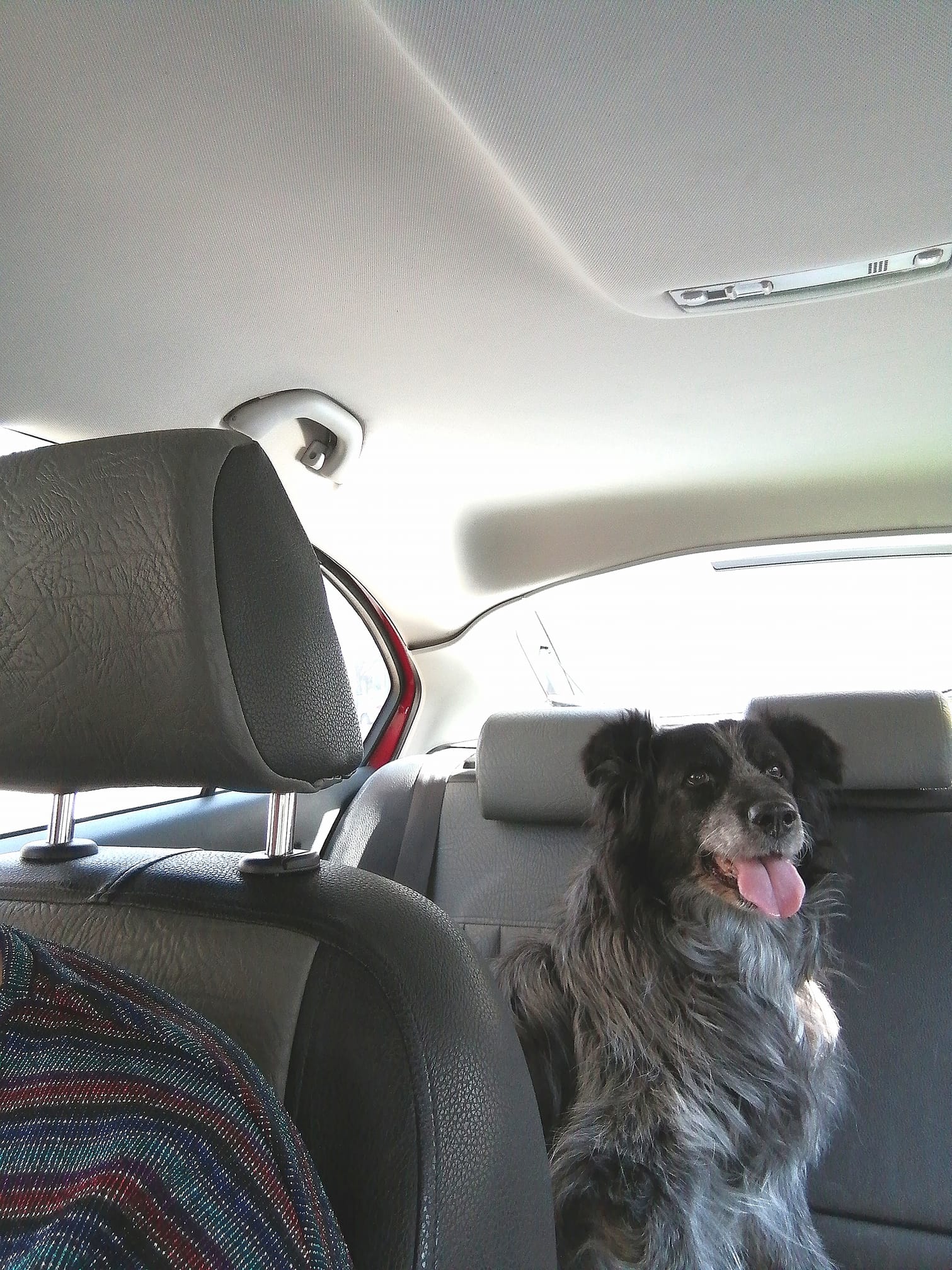
Research pet policies and regulations
If you are travelling to a foreign country, before your trip, research the pet policies and regulations of your destination. Some places may have specific requirements or restrictions, such as leash laws or breed restrictions. This recommendation is valid whenever you travel with pets by car.
Also, keep in mind that if you are just crossing some countries on your way to your final travel destination, you must check all the pet travel regulations in those countries too, and adhere to them.
You may need to adjust your itinerary based on restrictions (especially breed restrictions).
Carry necessary documentation
No guide to traveling with your dog by car would be complete without emphasizing the importance of having the dog’s documentation with you.
Ensure you have all the necessary documentation for your dog, including vaccination records, health certificates, and any permits required for travel. These documents may be requested at certain accommodations or border crossings.
Find pet-friendly accommodations and dining options
It should go without saying that you should plan your route in advance and look for pet-friendly accommodations that welcome dogs.
Additionally, look up for restaurants or cafes with outdoor seating where you can enjoy meals with your furry friend.
As I want you to know that it is not that difficult to travel with your dog, I have to add that when traveling locally (and even internationally) is not that hard. You can find pet-friendly accommodation on many booking sites.
As for the restaurants and cafes, I admit I never looked for such restaurants in advance when traveling locally – and yet we had no issues. We always found places – with an outdoor terrace or pet friendly – so we had no problems.
Conclusion
Traveling with a dog by car can be a delightful experience, full of adventure and cherished memories. By following these tips and planning ahead, you can ensure a safe, comfortable, and enjoyable road trip for both you and your furry companion.
Remember, each dog is unique, and it’s important to consider their individual needs and preferences. Be patient, attentive, and flexible throughout the journey, and always prioritize your dog’s well-being.
I hope that this comprehensive travel with your dog car guide is useful to you even regardless of the type of trips you are taking.
So, buckle up, hit the road, and embark on a remarkable journey with your faithful companion by your side. Happy travels!

